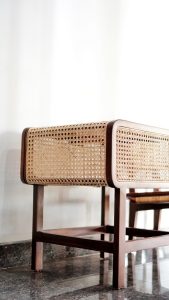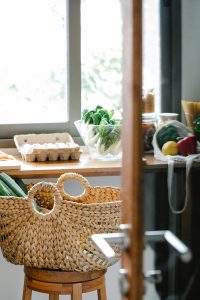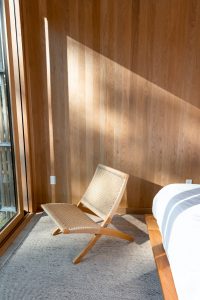What is Rattan?
Rattan is a type of climbing palm plant that grows naturally in the rainforests of Southeast Asia, including Indonesia, Malaysia, and the Philippines. The stem of the rattan plant is long, thin, and flexible, and can be used for weaving furniture, baskets, and other handicrafts. Rattan is known for its strength, durability, and natural beauty, and is often used to make outdoor furniture, such as chairs, tables, and sofas, as well as indoor furniture and decorative items.
Rattan is considered to be a sustainable and eco-friendly material because it is a renewable resource that grows quickly and requires minimal processing. Rattan has been used for centuries in traditional weaving and handicrafts, and continues to be a popular material for furniture and decorative items around the world.
Production Process of Natural Rattan Furniture
The production process of natural rattan furniture typically involves the following steps:
- Harvesting:
Rattan is harvested from the forests of Indonesia, where it grows naturally. Skilled workers use traditional tools to cut and extract the long, thin stems from the plant. - Sorting and selection:
The harvested rattan stems are sorted and selected based on their thickness, length, and quality. Only the best quality stems are chosen for furniture production. - Cleaning and drying:
The selected rattan stems are cleaned and stripped of their outer skin, which is tough and fibrous. The cleaned stems are then left to dry naturally in the sun for several days. - Treatment:
To ensure that the rattan is durable and resistant to insects, it is treated with a solution of borax and water. This solution is absorbed by the rattan, making it stronger and more resilient. - Weaving:
The dried and treated rattan stems are then woven into the desired furniture shape by skilled artisans. This process involves bending and shaping the rattan stems using heat and pressure, and then weaving them together to create the furniture's frame and support. - Finishing:
Once the weaving is complete, the furniture is sanded and finished with a clear protective coating to enhance its natural color and durability. - Quality control:
The finished furniture is inspected for quality and durability before being shipped to customers.
Overall, the production process of natural rattan furniture is time-consuming and requires skilled labor. However, the resulting furniture is durable, lightweight, and eco-friendly, making it a popular choice for indoor and outdoor use.
Why Natural Rattan Furniture?

1. Natural beauty
Rattan is a unique and beautiful material that can add a touch of natural elegance to any space. The intricate weaving patterns and natural textures of the rattan really show how beautiful rattan furniture is.
2. Durability
Rattan is a strong and durable material that can last for many years with proper care and maintenance.
3. Eco-friendly
Rattan is a sustainable and eco-friendly material that is renewable and biodegradable.
4. Versatility
Rattan furniture can be used both indoors and outdoors, and can be incorporated into a variety of design styles.
Natural Rattan Furniture vs Synthetic Rattan Furniture

Both natural rattan and synthetic/plastic rattan furniture have their own unique qualities and benefits. Natural rattan furniture is often favored for its natural beauty, durability, and sustainability. Natural rattan furniture is made from a renewable resource that is biodegradable and has a low carbon footprint, which makes it an eco-friendly choice. Additionally, natural rattan furniture can last for many years with proper care and maintenance.
On the other hand, synthetic/plastic rattan furniture can be a more affordable and lightweight alternative to natural rattan. Synthetic rattan furniture is often easier to clean and maintain, and can be resistant to weather and UV rays. However, synthetic rattan furniture is not biodegradable, can release harmful chemicals during manufacturing, and has a greater negative impact on the environment during disposal.
Ultimately, the choice between natural and synthetic rattan furniture will depend on personal preferences and priorities, such as aesthetics, durability, cost, and environmental impact.
Maintenance of Natural Rattan Furniture

To maintain natural rattan furniture, you should follow these tips:
1. Keep it dry:
Avoid exposing your natural rattan furniture to moisture, and wipe up any spills or water immediately to prevent any damage.
2. Clean it regularly:
Use a soft, damp cloth to wipe down your rattan furniture regularly, removing any dirt or dust that may accumulate. You can also use a vacuum cleaner with a brush attachment to clean hard-to-reach areas.
3. Avoid direct sunlight:
Excessive exposure to sunlight can cause the natural rattan to fade, so try to keep it away from direct sunlight.
4. Use furniture polish:
To keep your natural rattan furniture looking its best, apply a small amount of furniture polish periodically. Be sure to follow the manufacturer's instructions.
5. Avoid harsh chemicals:
Never use harsh chemicals or abrasive cleaners on your rattan furniture, as they can damage the natural fibers.
By following these tips, you can help ensure that your natural rattan furniture stays in good condition for years to come.
